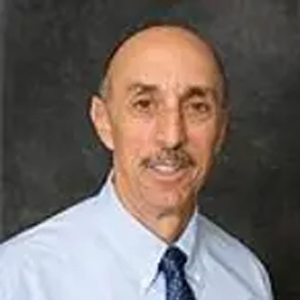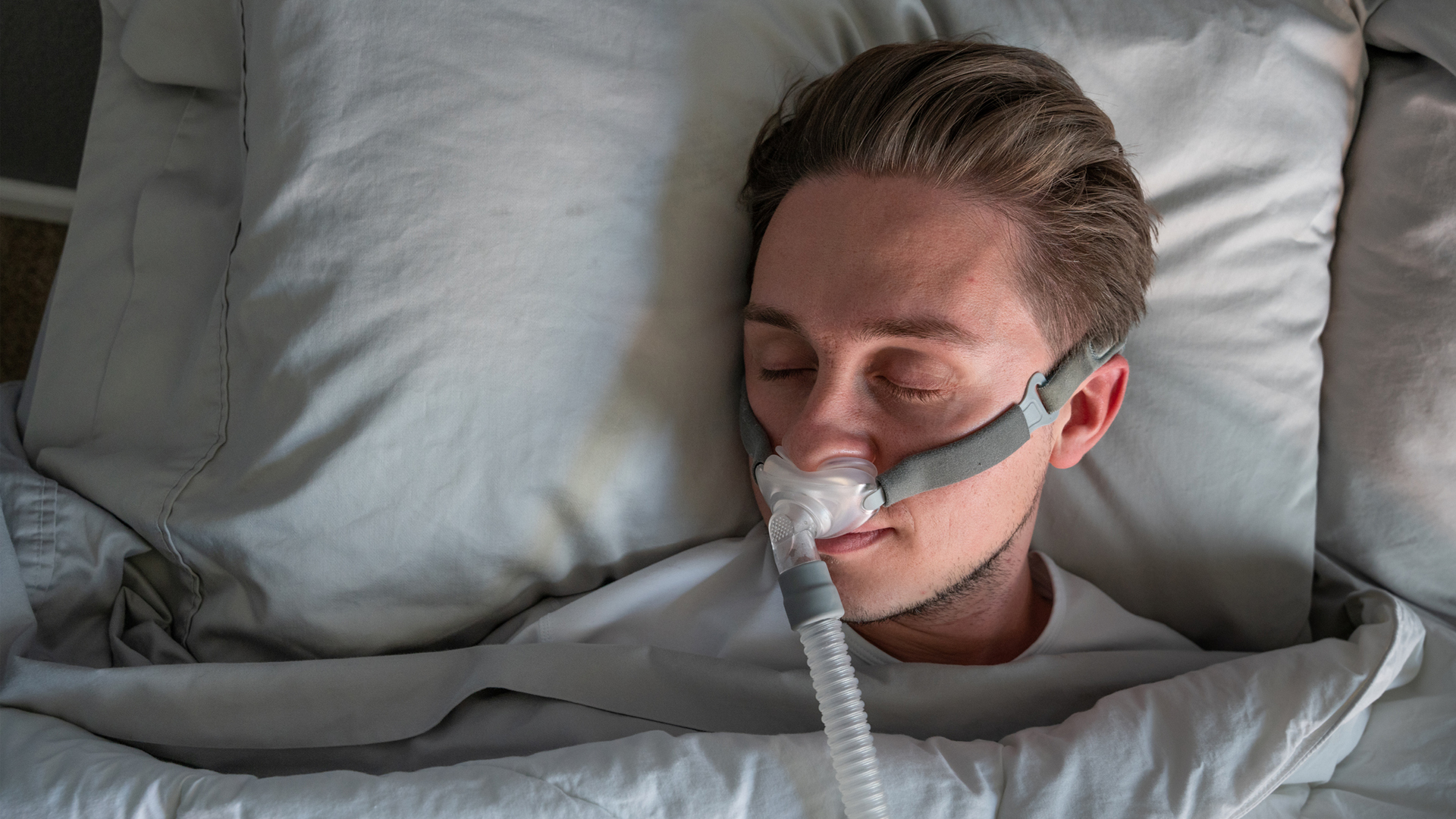Sleep apnea: Symptoms, causes and treatments
Sleep apnea is a condition in which people experience pauses in breathing, or shallow breathing, during sleep.

Sleep apnea is a condition in which people experience pauses in breathing or shallow breathing during sleep. Around 22 million Americans may suffer from sleep apnea, according to the American Sleep Apnea Association, and around 80 percent of moderate and severe obstructive sleep apnea goes undiagnosed. In fact, people with severe sleep apnea have a higher risk of sudden death than those without the condition, say the American Academy of Sleep Medicine.
These pauses in breathing, called apneas, can occur as often as 30 or more times per hour, according to the National Heart, Lung and Blood Institute (NHLBI). Sleep apnea may result in poor sleep and lead to daytime sleepiness. It is often associated with snoring too. Between 12 and 18 million U.S. adults have sleep apnea.
Sleep apnea: Causes
There are two main types of sleep apnea: obstructive sleep apnea and central sleep apnea. In obstructive sleep apnea, the airway becomes partially or fully blocked during sleep. Dr. Deborah Lee, a medical writer for Dr Fox Online Pharmacy in England, told Live Science that this may happen because during sleep, muscle tone is relaxed, meaning the tissues that support the pharynx (the back of the throat) become loose and floppy.
"This includes the soft palate, the tongue, the tonsils and the uvula — the triangular piece of tissue that dangles from the back of the roof of the mouth," she said. "When you breathe in and out, these tissues are 'sucked in' causing a temporary blockage of the trachea and preventing air from passing down into the airways."

Having worked for many years in the National Health Service in England, initially as a general practitioner, and then as lead clinician for an integrated community sexual health service, Dr. Deborah Lee now works as a health and medical writer for Dr Fox Online Pharmacy.
Other factors that can lead to a blocked airway during sleep include having tonsils that are large compared with the opening of the windpipe and being overweight, which can narrow the inside of the windpipe, the NHLBI says.
A blocked airway can lead to a drop in blood oxygen levels, which triggers the brain to wake a person from sleep, so that their airway re-opens, according to the NHLBI. This awakening may be so short that someone does not remember it, according to the Mayo Clinic. When normal breathing resumes, there is often a loud snort or choking sound.
Central sleep apnea is less common than obstructive sleep apnea. With central sleep apnea, the brain stops sending signs to the muscles that allow you to breathe. The condition may be due to other medical problems, such as problems that affect the brain stem, Parkinson's disease, obesity and heart failure, according to a factsheet by the National Library of Medicine.
Get the world’s most fascinating discoveries delivered straight to your inbox.
Some people have a combination of obstructive and central sleep apnea, known as mixed sleep apnea.
Sleep apnea: Symptoms
The most common symptom of obstructive sleep apnea is loud snoring, although not everyone who snores has sleep apnea, according to NHLBI. People with the condition may also have pauses in snoring, followed by choking or gasping. Daytime sleepiness is also another common sign of sleep apnea.
Other signs of sleep apnea include:
- Headaches in the morning
- Waking up with a dry mouth or sore throat
- Difficulty learning or concentrating during the day
- Waking up frequently in the night to urinate
- For central sleep apnea, waking up suddenly with shortness of breath
Because these breathing problems happen during sleep, people are often not aware that they have sleep apnea, and a family member or significant other is often the first person to spot the problem.
"A lot of times [patients] are brought in by their spouse," said Dr. Robert Lapidus, an associate professor in the Divisions of Pulmonary, Critical Care and Sleep Medicine at National Jewish Health Hospital in Denver.
Sleep researchers classify sleep apnea as mild, moderate or severe based on the number of apneas and hypopneas that a patient experiences per hour during sleep. An apnea is a cessation of airflow that lasts at least 10 seconds, and a hypopnea is a reduction in airflow of at least 30% that's associated with a drop in blood oxygen levels, and lasts at least 10 seconds, Lapidus said.

Dr. Robert J. Lapidus is a pulmonologist in Denver, Colorado, and is affiliated with National Jewish Health-Denver. He received his medical degree from University at Buffalo School of Medicine and has been in practice for more than 20 years.
Less than five of these events per hour is considered normal, five to 15 is considered mild sleep apnea, 15 to 30 is considered moderate sleep apnea, and greater than 30 is considered severe sleep apnea, Lapidus said.
Though feeling sleepy may also be a symptom, women perceive sleep differently than men, said Dr. Stuart Quan, a sleep medicine specialist and researcher at Brigham and Women's Hospital in Boston. So, this symptom may be confusing. Men may say they are "feeling sleepy," which to them means they could fall asleep right now if they went to bed, but women are more likely to say they "feel tired or fatigued," he said.
"Tired can mean a lot more than sleepy," Quan noted. It might not necessarily mean that the person could lie down and fall asleep.
Sleep apnea: Risk factors
People are at increased risk for obstructive sleep apnea if they are overweight/obese, are older than 60 or are male — men are twice as likely as women to have sleep apnea, according to the Mayo Clinic.
Women and those who are not overweight can still develop sleep apnea. People who have small airways or enlarged tonsils may be at increased risk for the condition due to the structure of their airways. A review in Journal of the American Board of Family Medicine recommends a Tonsillectomy and Adenoidectomy (removal of tonsils and adenoid tissue) in children with obstructive sleep apnea. There may also be a genetic element to sleep apnea, making those who have family members with the condition more likely to develop it themselves.
There are long-term harmful consequences of sleep apnea which pose a risk to cardiovascular health, Lee said. "Untreated, the sufferer remains at increased risk of cardiac events — heart attack, arrhythmias, heart failure and sudden death — stroke and pulmonary hypertension," she said.
Sleep apnea: Diagnosis
A sleep apnea diagnosis is based on a medical history, a physical exam — which looks at the tissue in your mouth, nose and throat — and a sleep test.
Sleep tests are the most accurate way of diagnosing sleep apnea, the NHLBI says. One type of sleep test is a polysomnogram, which requires individuals to stay overnight in a sleep lab and have sensors attached to their body to monitor brain activity, eye movements, heart rate and blood pressure, according to the Handbook of Clinical Neurology.
There are also home-based tests for sleep apnea, which involve using a portable monitor to record oxygen levels in the blood, heart rate and breathing patterns.
An increasing number of sleep apnea patients are being diagnosed with home-based tests, Lapidus said. Home tests are much less expensive than lab tests, more convenient to the patient, and generally provide comparable information to lab tests if patients do not have comorbidities like heart disease, Lapidus said.
However, if a patient does have comorbidities (another condition such as Parkinson's or anxiety, for example), then doctors like to perform a lab-based test, Lapidus said. In addition, home-based tests may underestimate the severity of the sleep apnea, so if a home-base test shows a normal result, but doctors are concerned about sleep apnea, a patient may need to repeat the test in a lab, Lapidus said.
Sleep apnea: Treatment
People with mild sleep apnea may only need to make some lifestyle changes to improve their condition, such as weight loss, smoking cessation and sleeping on their side instead of their back, explain the NHLBI.
A mouthpiece designed to keep the airway open may also help people with mild sleep apnea.
"Mandibular advancement devices (MAD) are specific devices worn in the mouth which have the effect of bringing the lower jaw forward and hence relieving airway obstruction," said Lee. "Ideally, a custom-made device should be supplied by a qualified dentist. Sleep studies should be repeated after this has been supplied to check if it is having the desired effect."
The most common treatment for moderate to severe sleep apnea is continuous positive airway pressure (CPAP). The device involves a mask over the nose, or mouth and nose, that uses air pressure to keep the throat open during sleep.

If a patient has a lab-based test for sleep apnea, then a technician may also be able to determine the optimal level of air pressure that the patient needs, Lapidus said.
Some patients will stop using their CPAP machine because they think the device is uncomfortable, but a lot of things can be done to improve the comfort of the device, Lapidus said. These include a fitting so that the mask fits more comfortably, padding devices that reduce pressure on the skin, and a machine that gradually increases air pressure, so that a patient can fall asleep with a lower air pressure, Lapidus said
In some cases of sleep apnea, surgery is performed to widen the breathing passages. This is generally done only if other treatments have failed, according to the Mayo Clinic.
A 2022 review in Sleep Breathing found that nasal surgery often leads to an increase in CPAP compliance and a decrease in CPAP pressures, indicating that the surgery makes it easier and more comfortable for patients to use the CPAP machine.
Additional resources

Rachael is a Live Science contributor, and was a former channel editor and senior writer for Live Science between 2010 and 2022. She has a master's degree in journalism from New York University's Science, Health and Environmental Reporting Program. She also holds a B.S. in molecular biology and an M.S. in biology from the University of California, San Diego. Her work has appeared in Scienceline, The Washington Post and Scientific American.
- Lou MudgeHealth Writer


